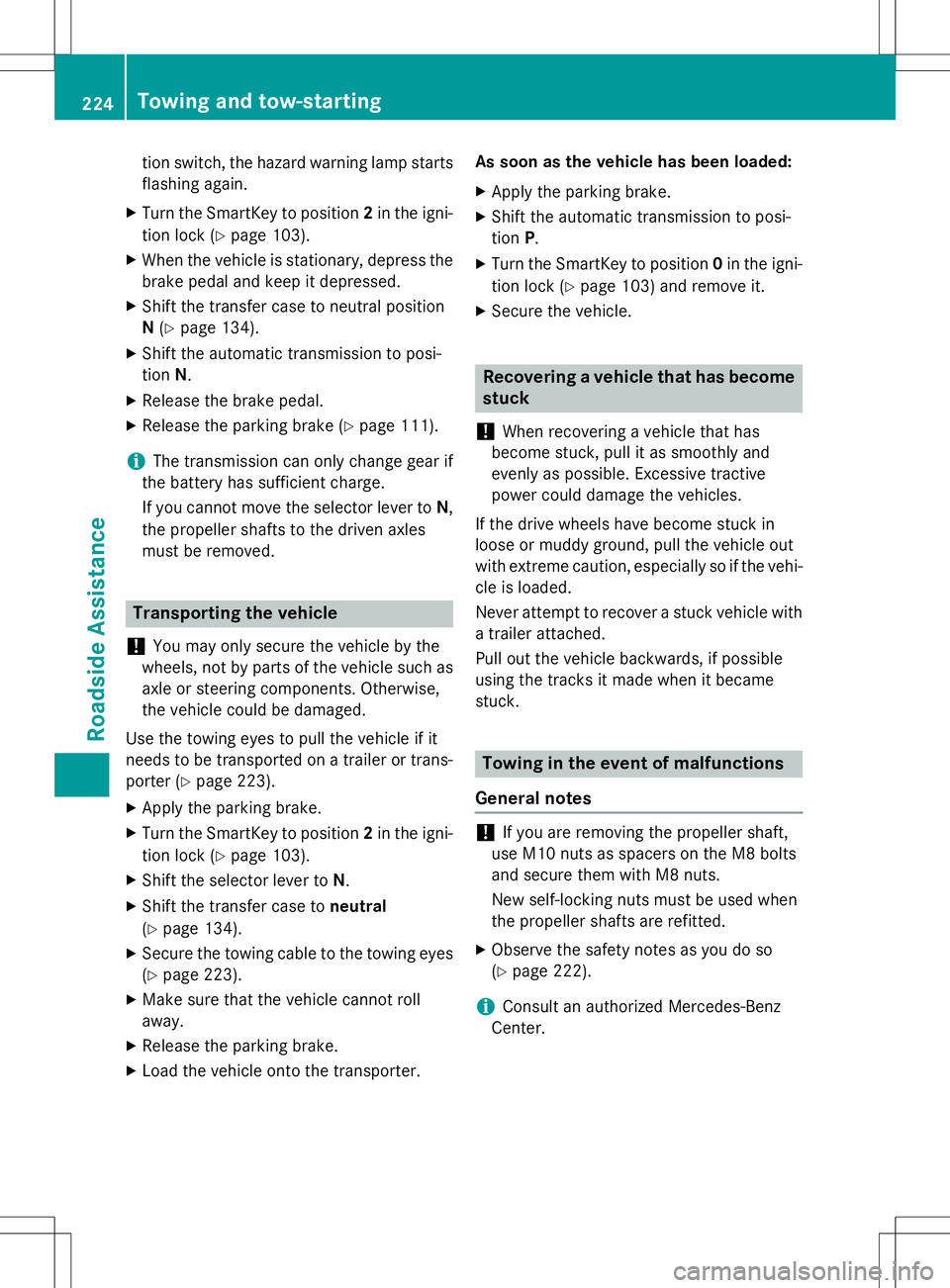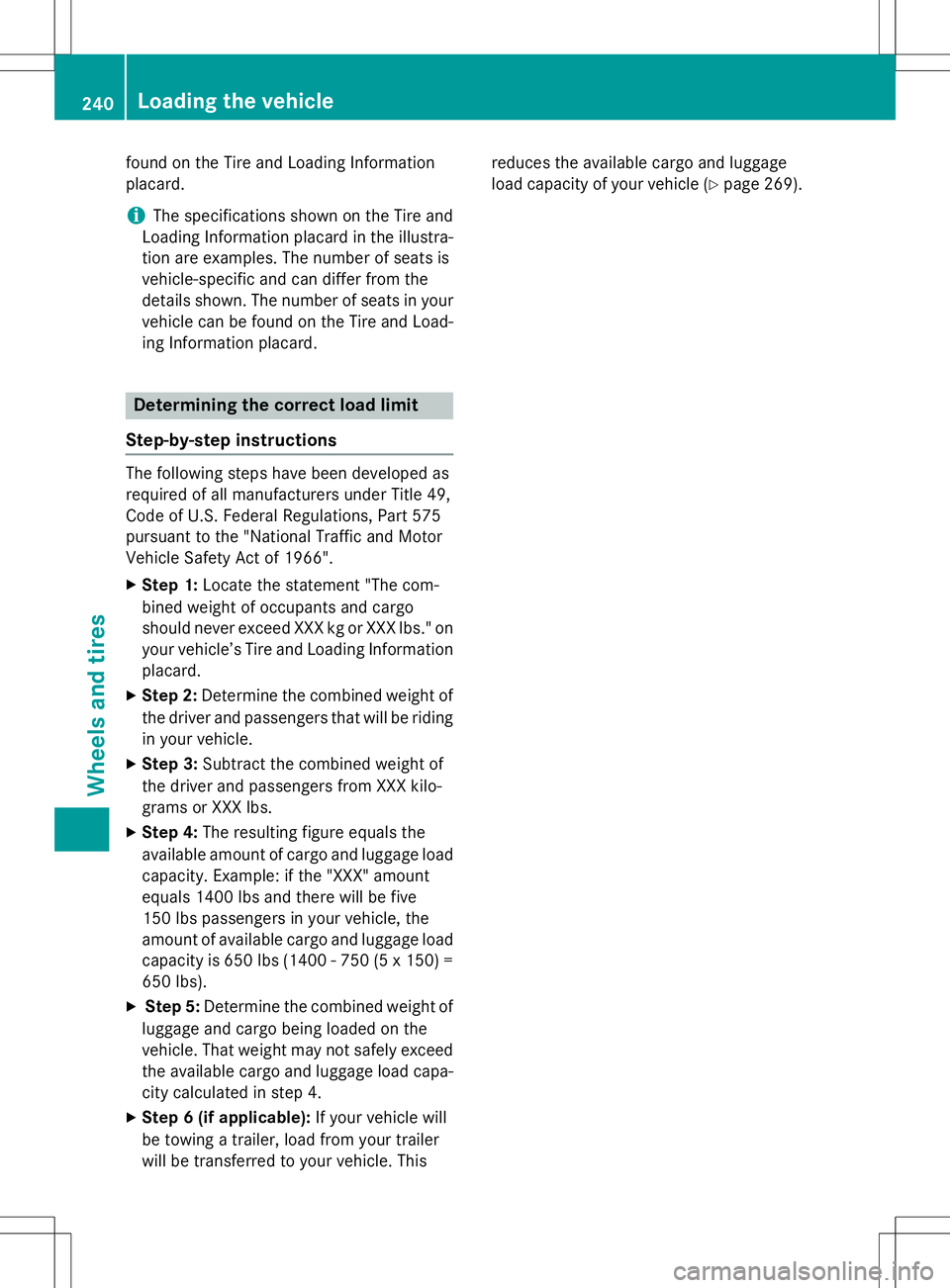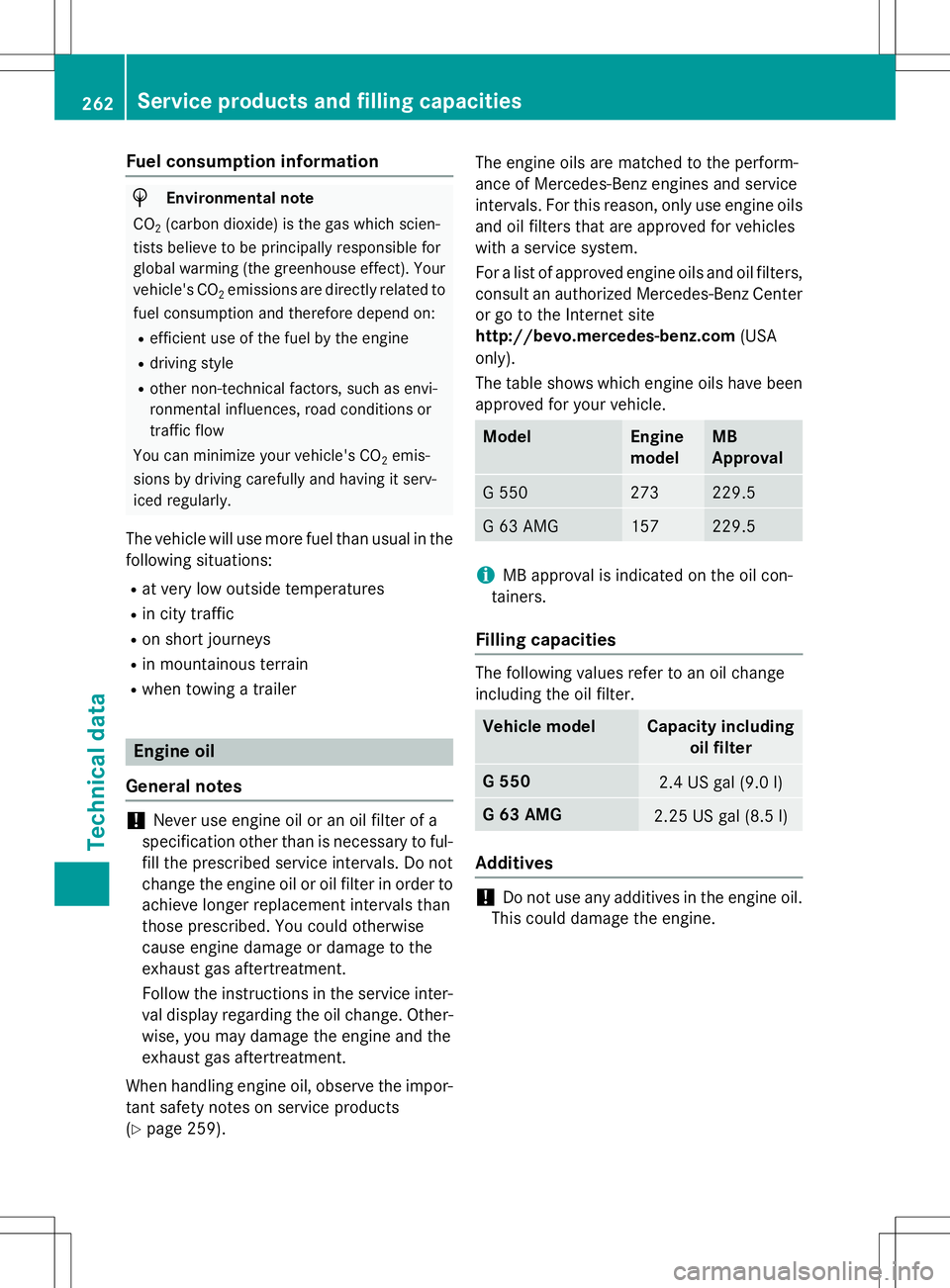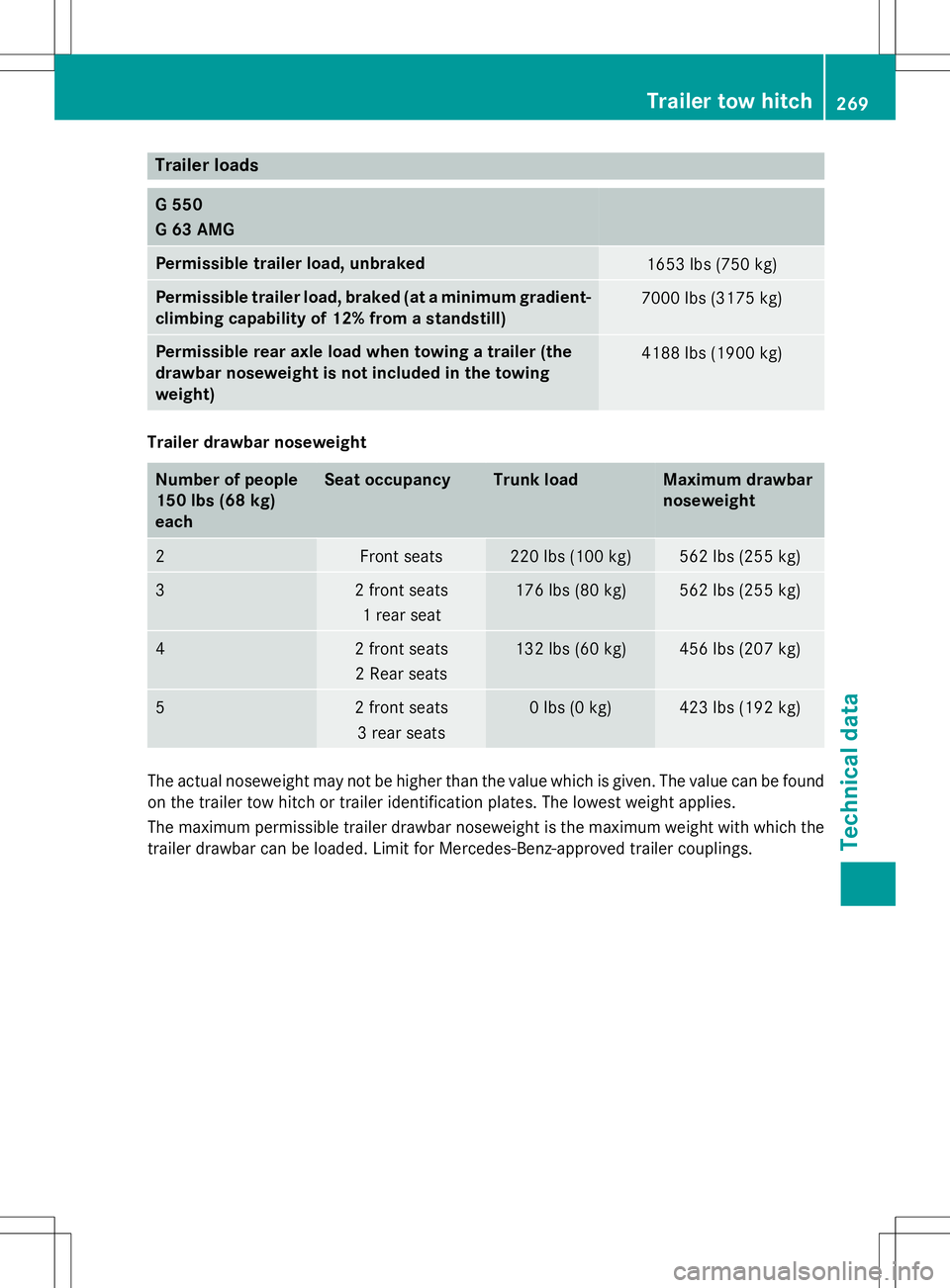Page 226 of 274

tion switch, the hazard warning lamp starts
flashing again.
X Turn the SmartKey to position 2in the igni-
tion lock ( Ypage 103).
X When the vehicle is stationary, depress the
brake pedal and keep it depressed.
X Shift the transfer case to neutral positionN (Y page 134).
X Shift the automatic transmission to posi-
tion N.
X Release the brake pedal.
X Release the parking brake ( Ypage 111).
iThe transmission can only change gear if
the battery has sufficient charge.
If you cannot move the selector lever to N,
the propeller shafts to the driven axles
must be removed.
Transporting the vehicle
!
You may only secure the vehicle by the
wheels, not by parts of the vehicle such as
axle or steering components. Otherwise,
the vehicle could be damaged.
Use the towing eyes to pull the vehicle if it
needs to be transported on a trailer or trans-
porter ( Ypage 223).
X Apply the parking brake.
X Turn the SmartKey to position 2in the igni-
tion lock ( Ypage 103).
X Shift the selector lever to N.
X Shift the transfer case to neutral
( Y page 134).
X Secure the towing cable to the towing eyes
( Y page 223).
X Make sure that the vehicle cannot roll
away.
X Release the parking brake.
X Load the vehicle onto the transporter. As soon as the vehicle has been loaded: X
Apply the parking brake.
X Shift the automatic transmission to posi-
tion P.
X Turn the SmartKey to position 0in the igni-
tion lock ( Ypage 103) and remove it.
X Secure the vehicle.
Recovering a vehicle that has become
stuck
!
When recovering a vehicle that has
become stuck, pull it as smoothly and
evenly as possible. Excessive tractive
power could damage the vehicles.
If the drive wheels have become stuck in
loose or muddy ground, pull the vehicle out
with extreme caution, especially so if the vehi-
cle is loaded.
Never attempt to recover a stuck vehicle with
a trailer attached.
Pull out the vehicle backwards, if possible
using the tracks it made when it became
stuck.
Towing in the event of malfunctions
General notes
!If you are removing the propeller shaft,
use M10 nuts as spacers on the M8 bolts
and secure them with M8 nuts.
New self-locking nuts must be used when
the propeller shafts are refitted.
X Observe the safety notes as you do so(Y page 222).
iConsult an authorized Mercedes-Benz
Center.
224Towing and tow-starting
Roadside Assistance
Page 242 of 274

found on the Tire and Loading Information
placard.
iThe specifications shown on the Tire and
Loading Information placard in the illustra-
tion are examples. The number of seats is
vehicle-specific and can differ from the
details shown. The number of seats in your vehicle can be found on the Tire and Load-
ing Information placard.
Determining the correct load limit
Step-by-step instructions
The following steps have been developed as
required of all manufacturers under Title 49,
Code of U.S. Federal Regulations, Part 575
pursuant to the "National Traffic and Motor
Vehicle Safety Act of 1966". X Step 1: Locate the statement "The com-
bined weight of occupants and cargo
should never exceed XXX kg or XXX lbs." on your vehicle’s Tire and Loading Information
placard.
X Step 2: Determine the combined weight of
the driver and passengers that will be riding
in your vehicle.
X Step 3: Subtract the combined weight of
the driver and passengers from XXX kilo-
grams or XXX lbs.
X Step 4: The resulting figure equals the
available amount of cargo and luggage load capacity. Example: if the "XXX" amount
equals 1400 lbs and there will be five
150 lbs passengers in your vehicle, the
amount of available cargo and luggage load
capacity is 650 lbs (1400 - 750 (5 x 150) =
650 lbs).
X Step 5: Determine the combined weight of
luggage and cargo being loaded on the
vehicle. That weight may not safely exceed
the available cargo and luggage load capa-
city calculated in step 4.
X Step 6 (if applicable): If your vehicle will
be towing a trailer, load from your trailer
will be transferred to your vehicle. This reduces the available cargo and luggage
load capacity of your vehicle (
Ypage 269).
240Loading the vehicle
Wheels and tires
Page 243 of 274

Example: steps 1 to 3
The following table shows examples on how to calculate total and cargo load capacities withvarying seating configurations and number and size of occupants. The following examples usea maximum load of 1,500 lbs (680 kg). This is for illustration purposes only. Make sure you
are using the actual load limit for your vehicle stated on your vehicle's Tire and Loading Infor- mation placard ( Ypage 238).
The greater the combined weight of the occupants, the lower the maximum luggage load.
Additional information when towing a trailer ( Ypage 269).
Step 1
Example 1Example 2Example 3
Combined maximum weight of
occupants and cargo (data from
the Tire and Loading Information placard)1500 lbs
(680 kg)1500 lbs
(680 kg)1500 lbs
(680 kg)
Step 2
Example 1Example 2Example 3
Number of people inthe vehicle (driver
and occupants)531
Distribution of the
occupantsFront: 2
Rear: 3Front: 1
Rear: 2Front: 1
Weight of the occu-
pantsOccupant 1: 150 lbs
(68 kg)
Occupant 2: 180 lbs
(82 kg)
Occupant 3: 160 lbs
(73 kg)
Occupant 4: 140 lbs
(63 kg)
Occupant 5: 120 lbs
(54 kg)Occupant 1: 200 lbs
(91 kg)
Occupant 2: 190 lbs
(86 kg)
Occupant 3: 150 lbs
(68 kg)Occupant 1:
150 lbs
(68 kg)
Gross weight of all
occupants750 lbs (340 kg)540 lbs (245 kg)150 lbs
(68 kg)
Loading the vehicle241
Wheels and tires
Z
Page 264 of 274

Fuel consumption information
HEnvironmental note
CO 2(carbon dioxide) is the gas which scien-
tists believe to be principally responsible for
global warming (the greenhouse effect). Your
vehicle's CO 2emissions are directly related to
fuel consumption and therefore depend on:
R efficient use of the fuel by the engine
R driving style
R other non-technical factors, such as envi-
ronmental influences, road conditions or
traffic flow
You can minimize your vehicle's CO 2emis-
sions by driving carefully and having it serv-
iced regularly.
The vehicle will use more fuel than usual in the following situations:
R at very low outside temperatures
R in city traffic
R on short journeys
R in mountainous terrain
R when towing a trailer
Engine oil
General notes
!Never use engine oil or an oil filter of a
specification other than is necessary to ful-
fill the prescribed service intervals. Do not
change the engine oil or oil filter in order to achieve longer replacement intervals than
those prescribed. You could otherwise
cause engine damage or damage to the
exhaust gas aftertreatment.
Follow the instructions in the service inter-
val display regarding the oil change. Other-
wise, you may damage the engine and the
exhaust gas aftertreatment.
When handling engine oil, observe the impor-
tant safety notes on service products( Y page 259). The engine oils are matched to the perform-
ance of Mercedes-Benz engines and service
intervals. For this reason, only use engine oils
and oil filters that are approved for vehicles
with a service system.
For a list of approved engine oils and oil filters,
consult an authorized Mercedes-Benz Center
or go to the Internet site
http://bevo.mercedes-benz.com (USA
only).
The table shows which engine oils have been
approved for your vehicle.
ModelEngine
modelMB
Approval
G 550273229.5
G 63 AMG157229.5
iMB approval is indicated on the oil con-
tainers.
Filling capacities
The following values refer to an oil change
including the oil filter.
Vehicle modelCapacity including oil filter
G 5502.4 US gal (9.0 l)
G 63 AMG2.25 US gal (8.5 l)
Additives
!Do not use any additives in the engine oil.
This could damage the engine.
262Service products and filling capacities
Technical data
Page 271 of 274

Trailer loads
G 550
G 63 AMG
Permissible trailer load, unbraked1653 lbs (750 kg)
Permissible trailer load, braked (at a minimum gradient-climbing capability of 12% from a standstill)7000 lbs (3175 kg)
Permissible rear axle load when towing a trailer (the
drawbar noseweight is not included in the towing
weight)4188 lbs (1900 kg)
Trailer drawbar noseweight
Number of people
150 lbs (68 kg)
eachSeat occupancyTrunk loadMaximum drawbar
noseweight
2Front seats220 lbs (100 kg)562 lbs (255 kg)
32 front seats
1 rear seat176 lbs (80 kg)562 lbs (255 kg)
42 front seats2 Rear seats132 lbs (60 kg)456 lbs (207 kg)
52 front seats 3 rear seats0 lbs (0 kg)423 lbs (192 kg)
The actual noseweight may not be higher than the value which is given. The value can be foundon the trailer tow hitch or trailer identification plates. The lowest weight applies.
The maximum permissible trailer drawbar noseweight is the maximum weight with which the
trailer drawbar can be loaded. Limit for Mercedes-Benz-approved trailer couplings.
Trailer tow hitch269
Technical data
Z